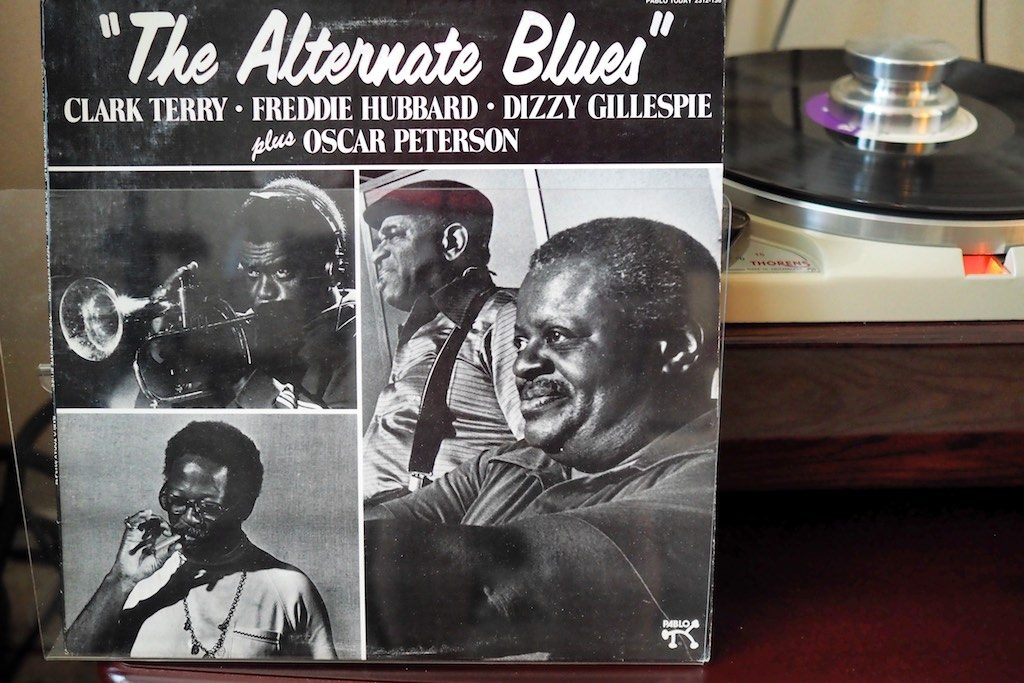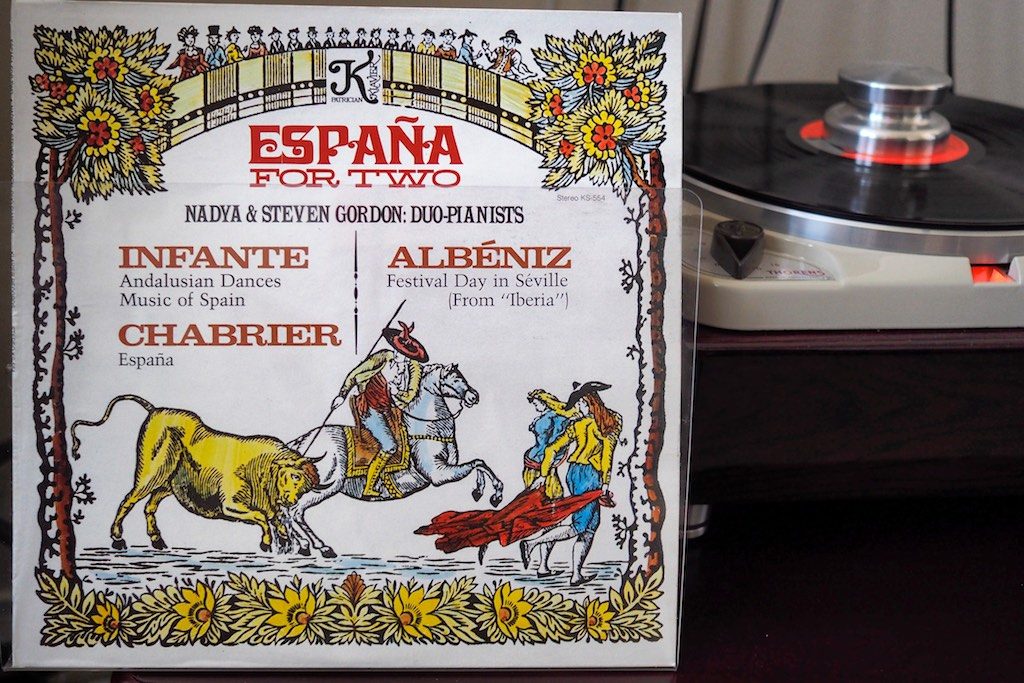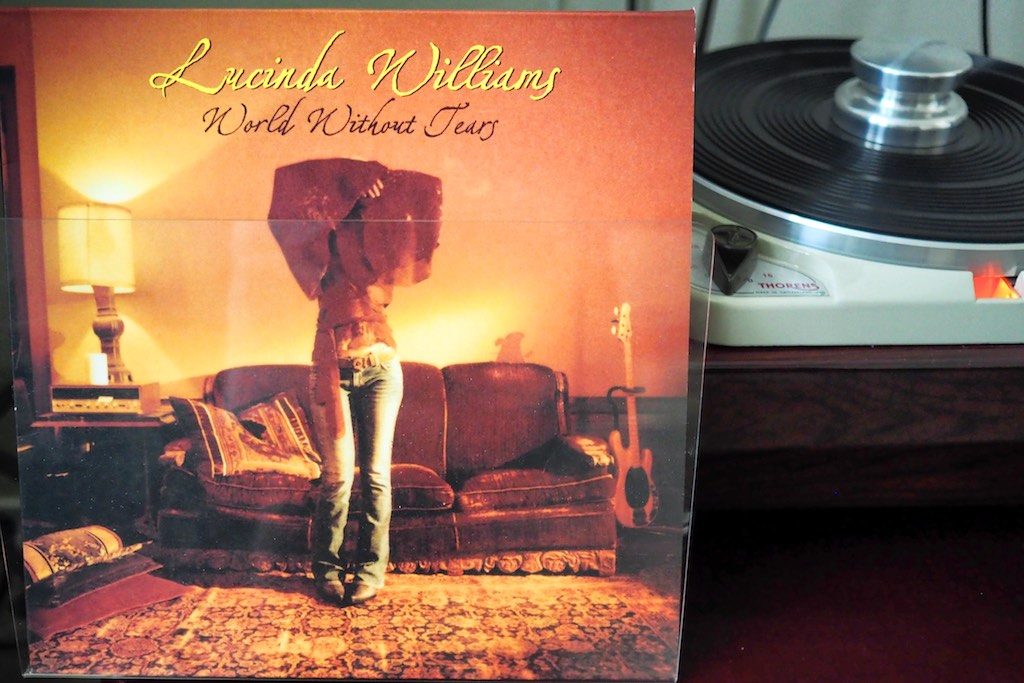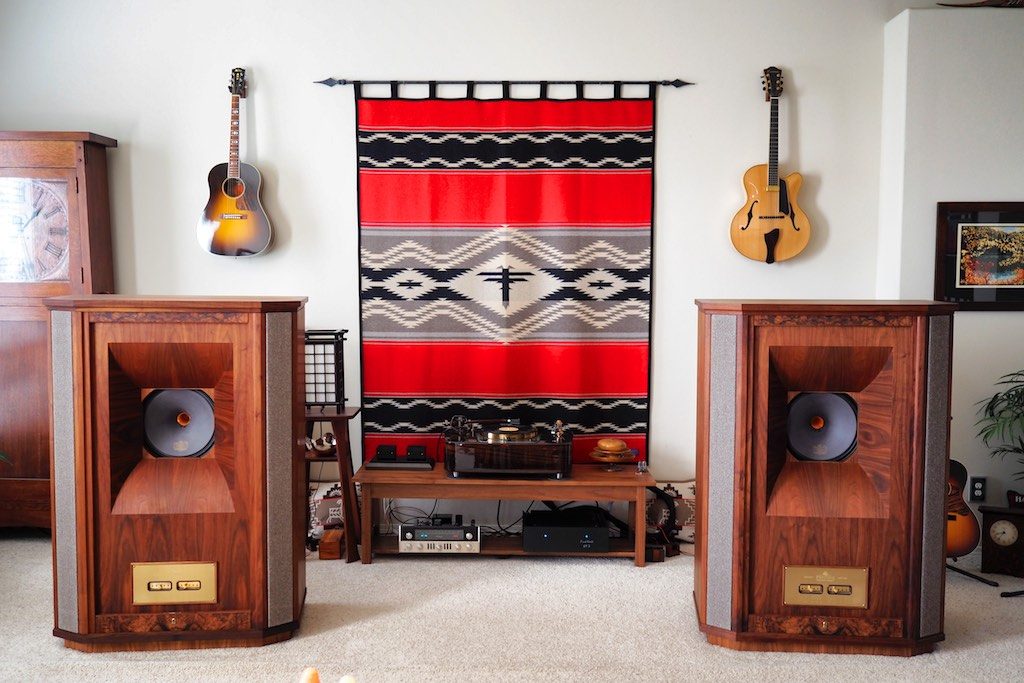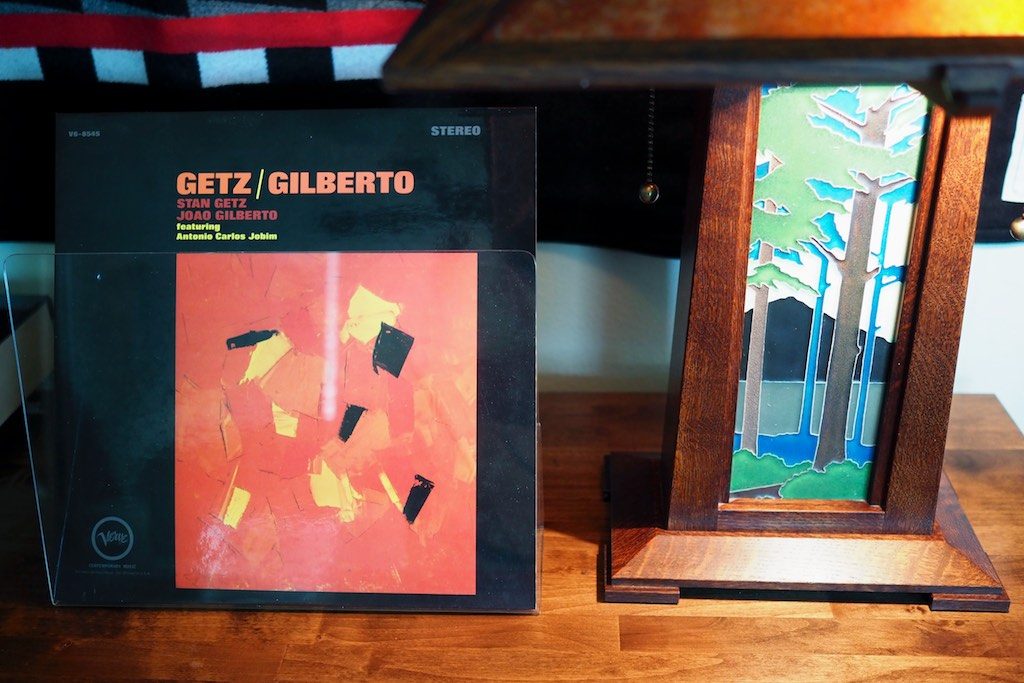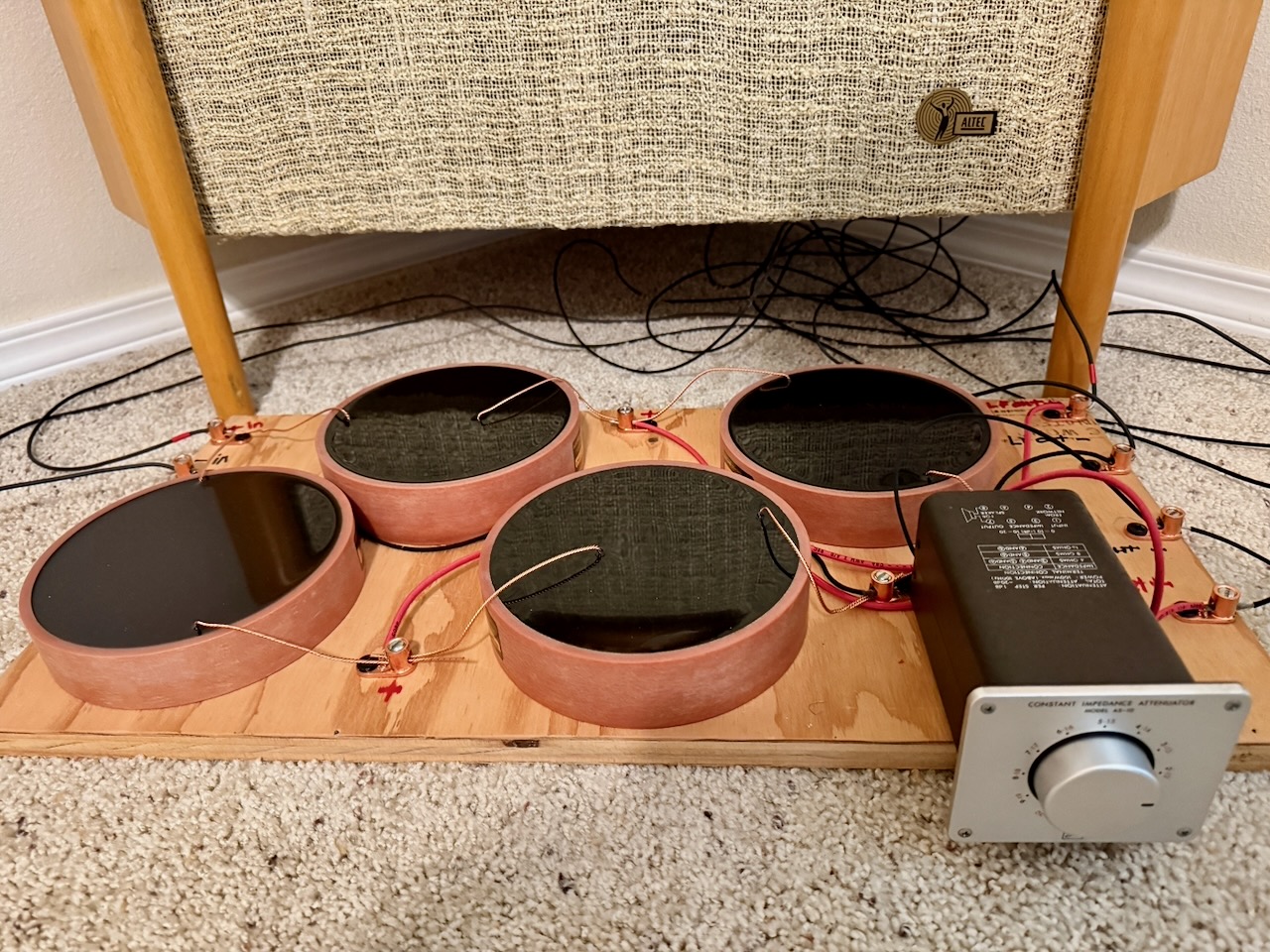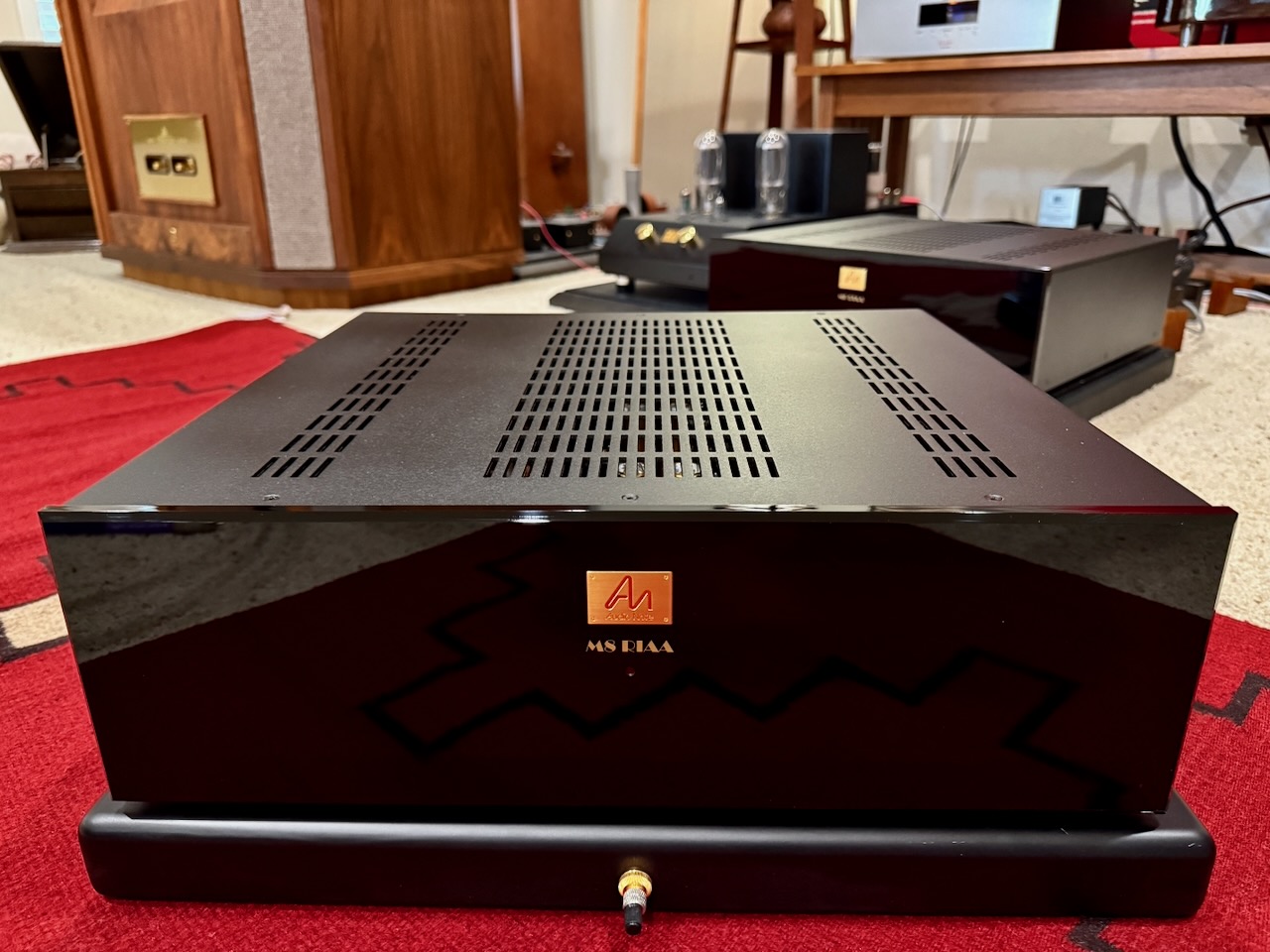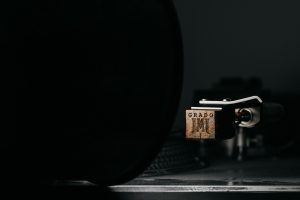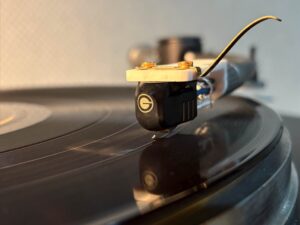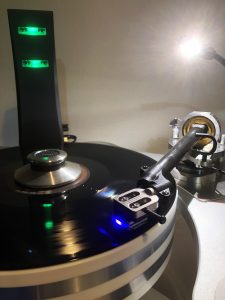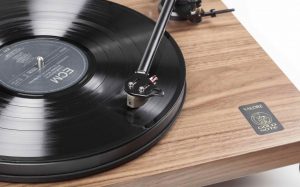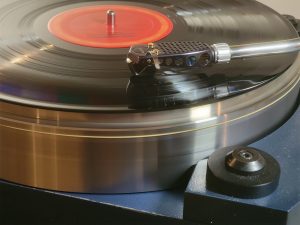The sense of tempos, and change in tempos, was also easily discernable and realistic sounding, and added to my musical enjoyment when listening to how bloody fast Chet & Les could play when they picked up the pace. Also, subtle gradations of dynamics were easily discerned as well, which breathed life into melodies, rhythms, and the beat.
What occurred to me while listening to Chester & Lester is how truly good my Artisan Fidelity Thorens TD124 Statement turntable could sound, and how musical it could be with the Soundsmith Carmen Mk II. The Carmen MK II is an amazing match for my Thorens, making it sound so musically transformed that I was really caught off guard by the resulting musical & sonic performance level it attained.
Another good test of a cartridge's performance is to play some muted trumpet with it, like that of Dizzy Gillespie, for example.
It's hard to beat the 1982 Pablo Records (2312 136) album The Alternate Blues for such a muted trumpet test (as well as for the great music), featuring Dizzy Gillespie (trumpet), Freddie Hubbard (trumpet, flugelhorn), Clark Terry (trumpet, flugelhorn), Oscar Peterson (piano), Joe Pass (guitar), Bobby Durham (drums), and Ray Brown (double bass).
In life, a muted trumpet can produce a shrill, high-pitched, strident, and screeching sound depending on how it's being played, and Dizzy's muted trumpet on The Alternate Blues can go there and take your ears off at times if a system or component's voicing isn't entirely in order and accentuates the muted trumpet's shrillness.
The Carmen Mk II presented Dizzy's muted trumpet realistically, sounding slightly shrill at times like it should, but never egregiously shrill and unpleasant, like it shouldn't. So overall, I give the Carmen Mk II high marks on muted trumpet timbre—it sounded very life-like and real without getting unnaturally shrill.
I also give the Carmen Mk II high marks for the timbral realism with which it presented Freddy Hubbard's and Clark Terry's flugelhorns, Oscar Peterson's piano, Joe Pass' guitar, Bobby Durham's drums, and Ray Brown's double bass—nicely done.
With The Alternate Blues the Carmen Mk II once again demonstrated its imaging prowess, served up a generous recorded acoustic and a nicely wide soundstage, and imbued the music with musical and intimate presentation that I really enjoyed.
I'm not much of a classical music guy, but there are some classical albums I do enjoy, and like to spin on occasion.
Lately I've been enjoying España For Two, with piano duo Nadya and Steven Gordon, on the Klavier label (KS 554) from 1975. España For Two album features Andalusian Dances, Festival Day in Seville (From "Iberia"), Music of Spain, and España, and is beautifully recorded and passionately played. España For Two puts you up fairly close to the pianos and makes for an immersive and engaging performance.
On España For Two the Carmen Mk II presents realistic piano timbre, gorgeous overall tone, lots of musical nuance, with natural warmth, lots of gorgeous overtones, well resolved tone color, and superb dynamic articulation over a wide range.
Listening to España For Two with the Carmen Mk II was a ravishingly beautiful and emotional experience. In fact, I found one of the major strengths of the Carmen Mk II to be its ability to bypass those little red flags that makes me aware I am listening to a recording, and just immerse me into the music's beauty, and deliver a big dose of emotional impact along with it.
The Carmen Mk II does this little magic trick very well – setting aside one's critical faculties—and letting me as a listener be enveloped in the feel and artistry of a performance. I think the Carmen Mk II's ability to deliver a musically captivating performance across a wide range of records is perhaps better than any other phonograph cartridge I've had the pleasure to hear.
The Carmen Mk II does have a tendency to make my life as an audio reviewer a little tougher, however, as there were many times during the review period where I would listen to an album all the way through, and I was so caught up in the joy of listening to the music that I forgot to take notes on the Carmen Mk II's musical & sonic performance. For those of you who aren't audio reviewers, I suspect you will find this a very nice trait indeed.
Let's listen to one last album before switching over to my Tannoy Westminster Royal SE based system for some further listening impressions in a different context, an album of female vocals that I really enjoy, but with a recording that is a little iffy (forward and a bit edgy & harsh at times)—Lucinda Williams' 2003 World Without Tears album (Lost Highway – 088 170 355-1).
I figured World Without Tears would make a good test of the Carmen Mk II's musicality prowess, particularly on the first track, "Fruits Of My Labor" which is one of the more egregious offenders. When the stylus settled into the groove I was rewarded with a largely musical transformation, with the forward edge on Lucinda's vocals when she leans into it essentially gone, and much better than I've heard from it previously with my trusty old Denon DL-103, for example.
At times I've wondered if Lucinda wasn't purposely going for forward & edgy vocals on some of her songs to accent the edgy nature of some of the lyrics, but I still prefer the music (and particularly Lucinda's vocals) with some of the edginess taken off, which the Carmen Mk II does pretty nicely.
The ballad-style songs on World Without Tears tend to be a little better recorded, and more flattering to Lucinda's vocals in particular, and the Carmen Mk II really showcased that to nice effect, giving them a rich, spacious, and emotive feel.
Even when World Without Tears songs included classic electric guitar playing awash in distortion effects to add to an edgy feel for the edgy topics Lucinda sings about, it sounded perfectly listenable and appropriately gritty.
The relaxed clarity of the Carmen Mk II really comes through on percussion, where you can hear all the inner detail of cymbals, with the bass drum providing a nice articulate beat to keep the music moving along, and keeping my foot tapping to keep time.
The Carmen Mk II provided a lot of musical transparency, a wide soundstage with superb imaging, great beat and tempo articulation, so there are a lot of performance aspects to praise.
Listening Impressions of the New Carmen Mk II in the Tannoy Westminster Royal SE Based System
Now let's me give you some snippets from my listening notes of the Carmen Mk II with my Tannoy Westminster Royal SE based system.
In this system with the much larger room size, and the placement of the Westminster Royal SE loudspeakers much further out into the room from the front wall, the Westminster-based system is capable of throwing a much deeper and more layered soundstage, with an enormous sense of room filling spaciousness, and vivid images with a lot of tangible presence, than is my vintage Altec A5 system. The Westminster Royal SE loudspeakers with their external Duelund CAST crossovers are also capable of resolving much more information than my vintage Altec A5 based system, which makes for a good test of components' resolving power.
The Soundsmith Carmen Mk II was mounted on my Thomas Schick graphite headshell, my favorite headshell to date. I utilized tinned-copper 22GA Art of Tone wire with Audiosilente clips for headshell leads, which are my favorite headshell leads in terms of live-like musical realism for this particular system setup.
I installed the Carmen Mk II on the tonearm that I usually run my Ortofon SPU Mono CG 25 Di MkII mono phono cartridge on, and got the setup dialed in. Installing the Carmen Mk II cartridge onto the Schick tonearm makes it very handy to compare the Carmen Mk II & Schick tonearm combo to my usual stereo reference that my system is voiced around, the Ortofon SPU Classic GM MkII stereo phono cartridge mounted on the Woody SPU tonearm, which provides a benchmark for comparison that I am very familiar with in daily listening.
First, I'll mention my impressions of listening to the Carmen Mk II with that beautiful old Latin jazz album, Getz/Gilberto, featuring Antônio Carlos Jobim (piano), Stan Getz (tenor sax), João Gilberto (guitar, vocals), and Astrud Gilberto (vocals on "The Girl from Ipanema" and "Corcovado"), and Milton Banana (drums).
Getz/Gilberto was first released in 1964 on the Verve label. The version of Getz/Gilberto I listened to was the Analogue Productions (AP-8545) 45 RPM 200-gram reissue from 2011, which is my favorite version of this album.
I played Getz/Gilberto back on both tonearm & cartridge combinations, matching volume levels with peaks in the 93dB range. The Ortofon SPU + SUT's output is similar to that of the Carmen Mk II, but it puts out about 2db more on peaks, so I adjusted the volume for the Carmen Mk II up a little so they were relatively closely matched.
This was a rather startling "first" for me when comparing phonograph cartridges, as the Ortofon SPU + Intact Audio SUT + Duelund DCA20GA shielded interconnects + Woody SPU tonearm combination, sounded eerily similar to the Carmen Mk II + Schick tonearm combo in their overall tonality, soundstage width, and general musicality. That just doesn't happen in my experience with two very different phonograph cartridges!
Usually I hear quite a lot more of a difference between two phonograph cartridges' overall tonality and performance on musical and sonic parameters, so I really did an aural double take at their similar results and ended up going back & forth many times between the two to get a good take on what was going on performance-wise with them.
In spite of their similarities in overall tonality & musicality (a compliment to both, by the way) there were some small differences. The Ortofon SPU emphasized the vocal sibilance of João and Astrud slightly more, as well as emphasizing the sense of recorded space a little more, while the Carmen Mk II sounded a little smoother and more natural in the way it presented vocal sibilance.
While the imaging was similarly good between both cartridges on Getz/Gilberto, the Ortofon SPU spread the images a little further out into the room towards my listening position to give more apparent soundstage depth, with Astrud being further forward and João further back. The Ortofon SPU had a little more distinct layering of the images on the soundstage and added a little more reverberant space around the images, as well as provided a little more image presence and vividness, but the differences weren't huge.




